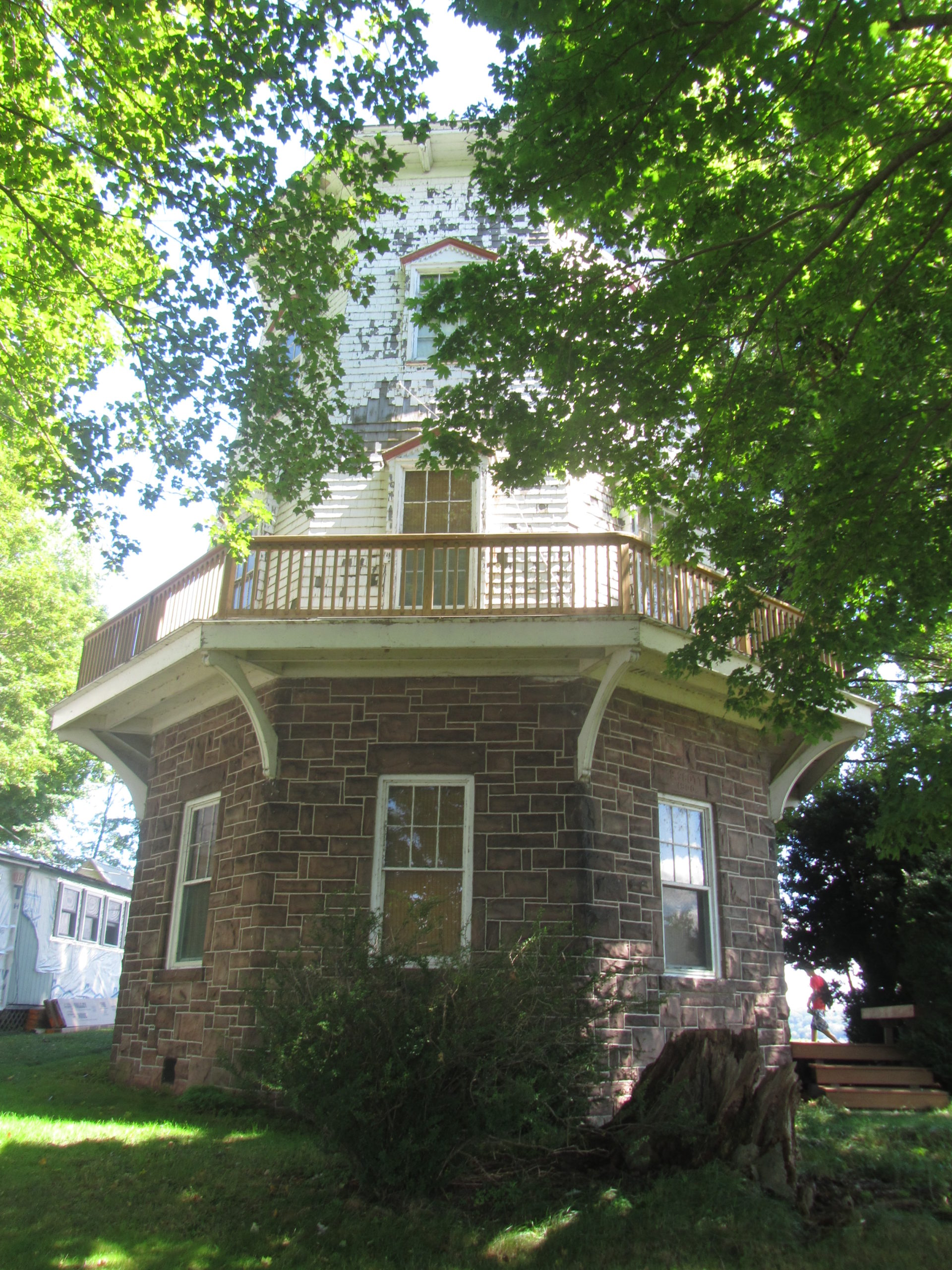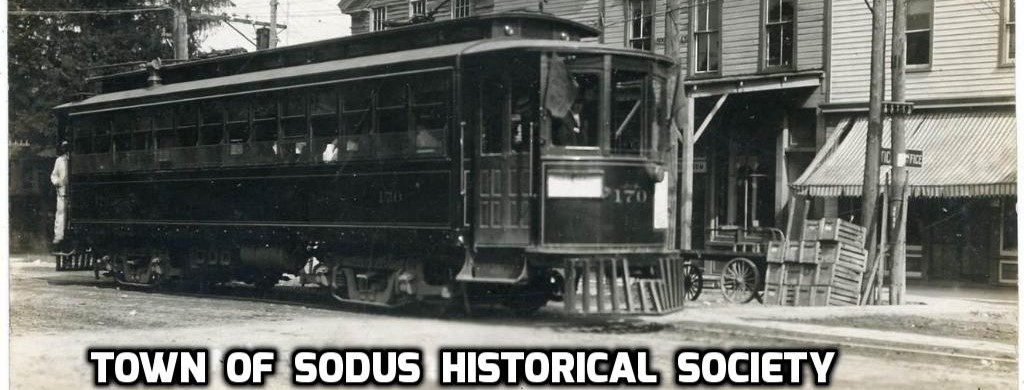
Photo from Octagon.bobanna.com website
Mr. Samuel Scott a gentleman of the old school in 1889 bought lot No. 6 and in 1898 sold it to his son Seymour, who has greatly improved the old cottage which he occupies with his wife and sons George and Harry. Mr. Seymour also purchased the Deady lot No. 7 of Mr. Richardson in 1899 and moving the cottage on the bar, has erected on the lot a beautiful Holland windmill tower, which would ornament a more pretentious summer resort.
Above information taken from the “Point Charles Sketch” written by James Cory Sheffield A.M., 1902; page 15.
 Photo by Edith Farrington 2013
Photo by Edith Farrington 2013
The following recollections are from Lucille Messinger written in an excerpt from “Wayne County Historical Society News Letter”, July 1970
In 1914 my father, Perry Messinger, of Sodus, bought a cottage on Charles Point, one of the row facing Sodus Bay. That same summer Harry Williams, also of Sodus bought from Seymour Scott of Lyons a large cottage facing the Lake and Crescent Beach. With the Scott property went the eight sided windmill type of building called the Tower. The Tower was the first in the row facing the Bay and between the two buildings was a rectangular rose garden. The open space of the rose garden rectangle was often for croquet. The Tower was regarded as a play house for Mrs. Scott who craved a livelier life style than that afforded on Charles Point.
After Mr. Williams bought the property the Tower became the play house for his motherless daughter Martha and the other children of Point Charles and the Bar. I don’t remember that the Tower was ever locked nor was anyone ever denied access to it. When, in the midst of our play, adults were seen approaching, we could disappear quickly and quietly.
The ground floor was rather dark. Its windows were shaded by trees, the walls had dark tapestry and oak panels. The heavy oak chairs were arranged stiffly around the sides of the room. We did not dare use it and I wonder who the collector is who now owns the Victrola that played the pierced tin disks.
A curving stairway led to the second floor, the library, whose reading matter consisted of yachting magazines and the National Geographic. The furniture was of rattan and had been the informal living room in Mrs. Scott’s playhouse. Here we children could look at pictures, play Flinch, Michigan, hearts, make up plays, or chase one another around the balcony.
The third floor was a bedroom for the guest house. Among other furniture was a pale yellow wooden bed whose headboard was decorated with a hand painted purple iris. This bedroom became a pool room. We children were never denied this adult entertainment.
The fourth floor was darker, hotter, and sort of a catch-all. It made a good hiding place for one faction against the other in some of our games. One could also be trapped there if adults entered the lower floors while we were perspiring in hiding.
 Photo by Edith Farrington 2013
Photo by Edith Farrington 2013
